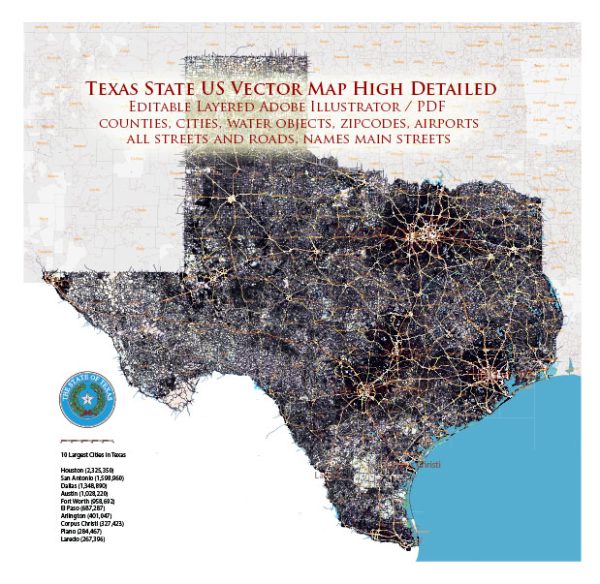Texas is known for its remarkable biodiversity, as it spans a wide range of ecosystems and habitats, from deserts and grasslands to forests and coastal areas. The state’s diverse geography and climate contribute to this rich biodiversity. Here’s a brief description of the biodiversity in Texas, focusing on some key ecosystems and species:
- Coastal Areas: Texas has a vast coastline along the Gulf of Mexico, which supports a unique coastal ecosystem. These areas are home to a variety of bird species, including brown pelicans, roseate spoonbills, and seagulls. The coastal marshes and wetlands provide important breeding and foraging grounds for many species of fish, crabs, and waterfowl.
- Piney Woods: The Piney Woods region in eastern Texas is characterized by dense pine forests, and it’s home to a wide range of wildlife, including white-tailed deer, eastern gray squirrels, and various songbirds. The region’s forests provide vital habitat for numerous plant and animal species.
- Hill Country: The Texas Hill Country features rolling hills, limestone outcroppings, and a unique blend of plant and animal life. You can find species like the endangered golden-cheeked warbler and the black-capped vireo here. The region is also known for its diverse wildflowers and shrubs.
- Desert and Arid Regions: West Texas includes arid desert areas, such as the Chihuahuan Desert. Here, you’ll find a range of desert-adapted species, including rattlesnakes, roadrunners, and various cacti. Big Bend National Park, in particular, is a biodiversity hotspot, with a mix of desert, mountain, and river ecosystems.
- Freshwater Ecosystems: Texas has numerous rivers, lakes, and reservoirs that support a variety of freshwater species. Common fish species include largemouth bass, catfish, and sunfish. Additionally, Texas is home to the critically endangered Texas blind salamander, which inhabits underground aquifers.
- Grasslands: The Texas plains and prairies are characterized by vast grasslands that support species like pronghorn antelope, coyotes, and various grassland birds. The region has experienced habitat loss due to agriculture and urban development, making conservation efforts crucial.
- Gulf of Mexico: The waters of the Gulf of Mexico off the Texas coast are teeming with marine life, including shrimp, oysters, and a wide variety of fish species like redfish, snapper, and flounder. The Gulf is also frequented by migratory species like sea turtles and dolphins.
- Bats: Texas is famous for its bat populations, particularly the Mexican free-tailed bats and the Brazilian free-tailed bats. These bats roost in large numbers in caves, bridges, and other structures, and they play a crucial role in controlling insect populations.
Overall, Texas’s biodiversity is characterized by a wide range of ecosystems and an abundance of plant and animal species. Conservation efforts are essential to protect and preserve the state’s natural heritage, given the ongoing challenges of habitat loss and environmental changes.


 Author: Kirill Shrayber, Ph.D.
Author: Kirill Shrayber, Ph.D.